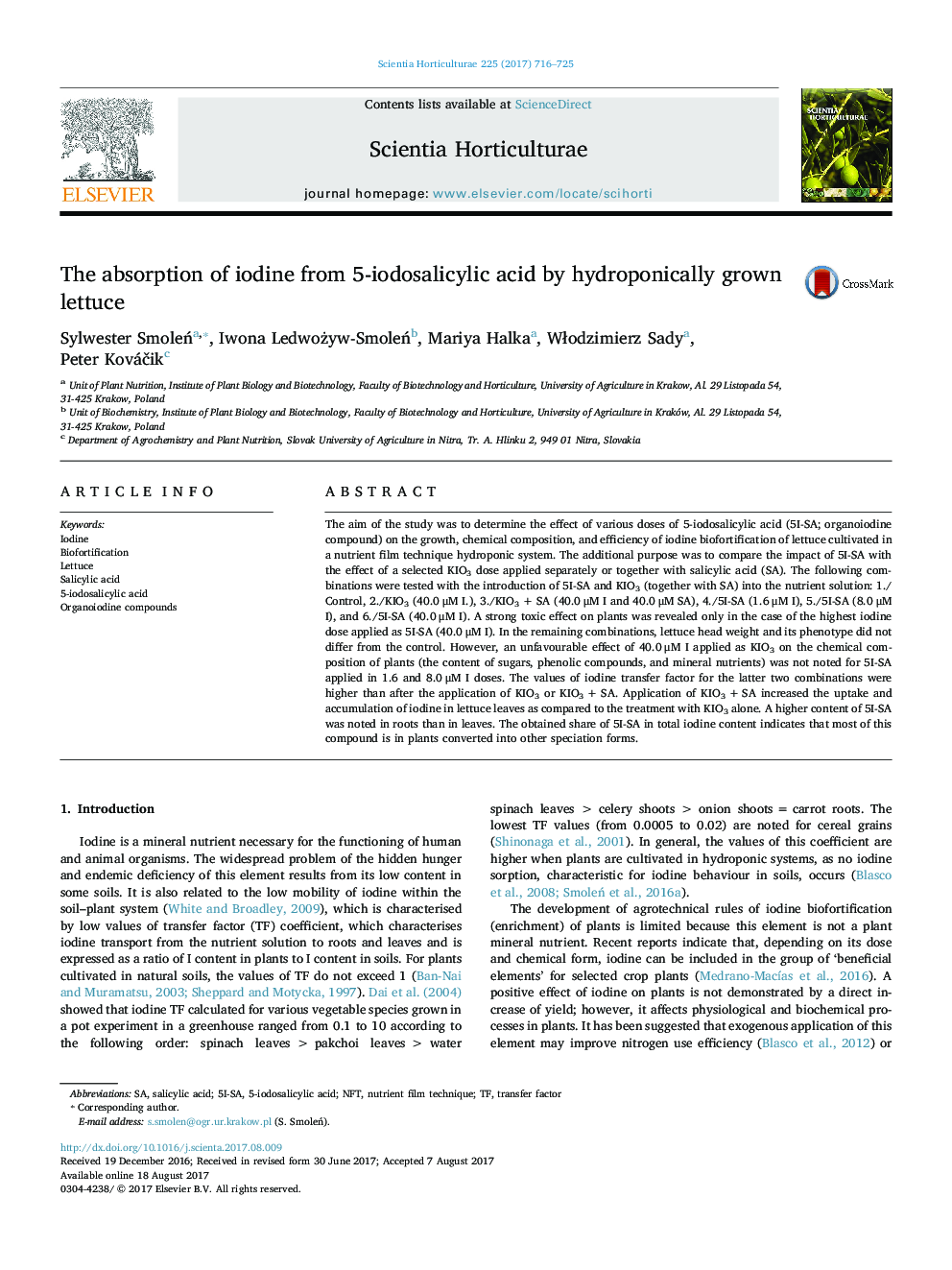| کد مقاله | کد نشریه | سال انتشار | مقاله انگلیسی | نسخه تمام متن |
|---|---|---|---|---|
| 5769322 | 1628773 | 2017 | 10 صفحه PDF | دانلود رایگان |
- The absorption of iodine from 5-iodosalicylic acid by lettuce.
- Application of KIO3+ salicylic acid increased accumulation of iodine.
- IO3â and 5-iodosalicylic acid undergo diverse mechanisms of conversion in plants.
- Higher content of 5-iodosalicylic acid was noted in roots than in leaves.
- 5-iodosalicylic acid is more easily absorbed by plants than IO3â.
The aim of the study was to determine the effect of various doses of 5-iodosalicylic acid (5I-SA; organoiodine compound) on the growth, chemical composition, and efficiency of iodine biofortification of lettuce cultivated in a nutrient film technique hydroponic system. The additional purpose was to compare the impact of 5I-SA with the effect of a selected KIO3 dose applied separately or together with salicylic acid (SA). The following combinations were tested with the introduction of 5I-SA and KIO3 (together with SA) into the nutrient solution: 1./Control, 2./KIO3 (40.0 μM I.), 3./KIO3 + SA (40.0 μM I and 40.0 μM SA), 4./5I-SA (1.6 μM I), 5./5I-SA (8.0 μM I), and 6./5I-SA (40.0 μM I). A strong toxic effect on plants was revealed only in the case of the highest iodine dose applied as 5I-SA (40.0 μM I). In the remaining combinations, lettuce head weight and its phenotype did not differ from the control. However, an unfavourable effect of 40.0 μM I applied as KIO3 on the chemical composition of plants (the content of sugars, phenolic compounds, and mineral nutrients) was not noted for 5I-SA applied in 1.6 and 8.0 μM I doses. The values of iodine transfer factor for the latter two combinations were higher than after the application of KIO3 or KIO3 + SA. Application of KIO3 + SA increased the uptake and accumulation of iodine in lettuce leaves as compared to the treatment with KIO3 alone. A higher content of 5I-SA was noted in roots than in leaves. The obtained share of 5I-SA in total iodine content indicates that most of this compound is in plants converted into other speciation forms.
300
Journal: Scientia Horticulturae - Volume 225, 18 November 2017, Pages 716-725
